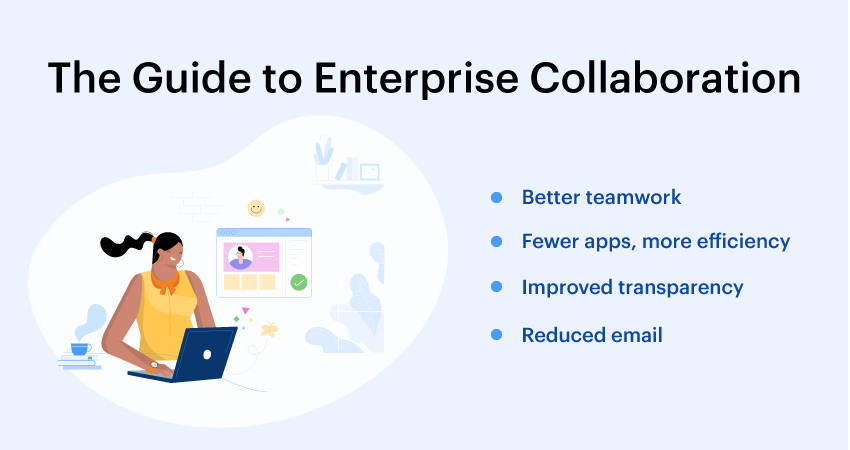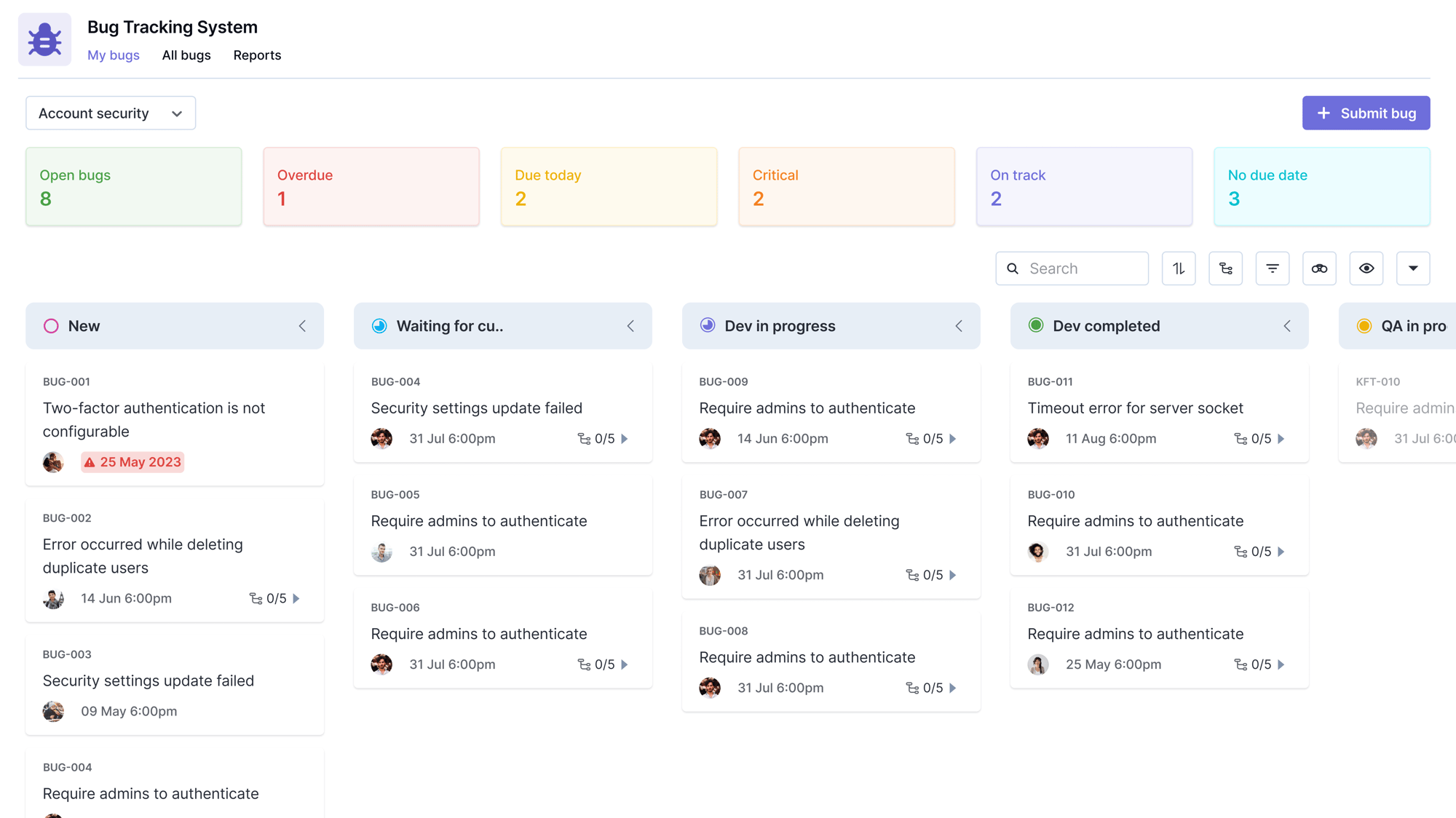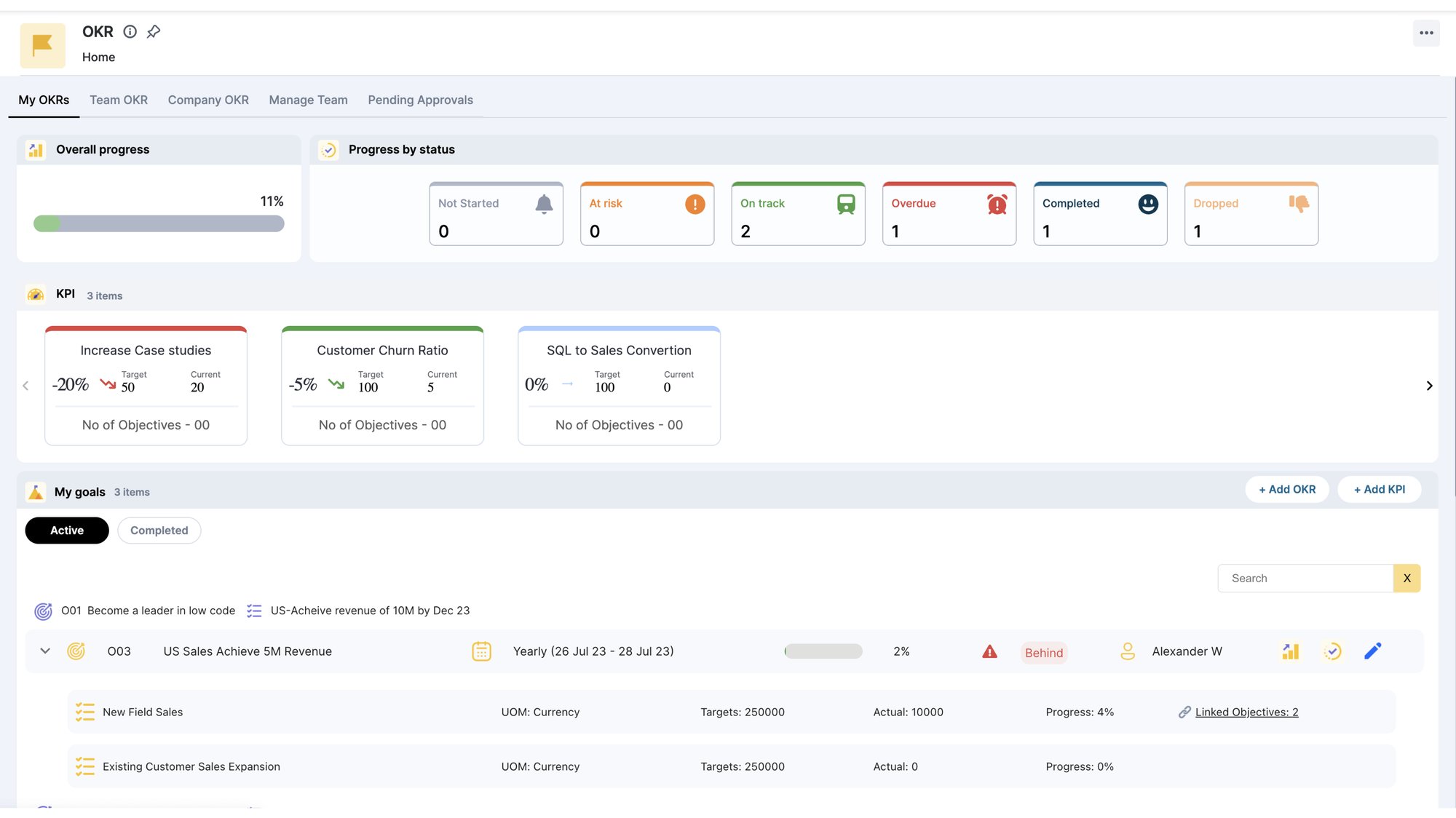The modern workplace is shifting and digitizing. Employees now expect more openness, better technology, improved collaboration, and higher flexibility in the workplace. As the workforce continues to become more and more distributed with a large number of employees going remote and others working from traditional offices, organizations need the right tools to keep their dispersed workforce always connected.
This is exactly where enterprise collaboration can help.
Enterprise collaboration allows employees to interact and communicate both across and beyond their work environment by giving them access to the technology that can streamline processes and enable collaboration.
What is enterprise collaboration?
Enterprise collaboration is defined as the system which is used for communication and collaboration in organizations to improve information gathering and knowledge sharing among employees, despite where they are located. The goal of enterprise collaboration is to make it easier for employees to work together, accomplish their tasks efficiently, and improve the overall business output.
It can be achieved through social networking tools, dedicated collaboration platforms, the company intranet, or even the internet. Successful enterprise collaboration in organizations leads to higher productivity, lesser chances of miscommunication, increased employee engagement, and better informed employees.

There are two types of enterprise collaboration:
Internal enterprise collaboration
Internal enterprise collaboration happens within the workspace of the organization and it helps in bringing together all the employees. As the main benchmark for enterprise collaboration, it is the key to efficiency in organizations. It allows employees to stay connected and informed by ensuring seamless communication.
External enterprise collaboration
External enterprise collaboration happens mostly on social media platforms among employees, consumers, and brands. It can also take place between companies that need to collaborate with each other in order to work together on products or services.
Evolution of enterprise collaboration
There are many trends that have readily shaped the future of collaboration and led us to enterprise collaboration, including:
Need for more flexibility
Business leaders need to realize that some company initiatives will require more resilience and flexibility for employees to perform their best work. Even the largest enterprises today have small teams that operate as startups with less formal processes and more independence in terms of how they operate or manage their work. These teams need flexible virtual meeting spaces that they can use to tackle problems in real-time.
Focus on content
Exchanging content as email attachments doesn’t cut it anymore. With so much content and data everywhere, employees need a more seamless way of file and information sharing to make it easier to collaborate on projects and manage their work.
Need for robust BYOD policies
Over 67 percent[1] of employees prefer to use their own personal devices at work and BYOD can bring as much as $350 per employee per year for organizations. As more employees step out of the office and work remotely, organizations need to ensure they have all the tools to stay connected with their team members and maintain efficiency, even when they are working remotely.
Benefits of enterprise collaboration
Reduced email
While email doesn’t have to permanently go away, the fact remains that email wasn’t built for today’s digital workplaces. We now have an increasing number of remote employees who need real-time collaboration in order to work together seamlessly. An enterprise collaboration tool offers real-time communication which can reduce back and forth emails while increasing productivity.
Improved transparency
Enterprise collaboration tools allow employees to easily track and manage projects, drive personal accountability and establish higher levels of trust which directly leads to more transparency within the organization.
Better teamwork
Real-time communication in teams results in more effective and efficient collaboration. Moreover, centralized file storage also cuts down on errors and confusion among team members. When all the employees collaborate through a single platform, it also helps support and improves cross-team collaboration.
Fewer apps, more efficiency
On average, employees are forced to switch between up to 35 applications every minute[2] — that is more than 1100 times in a day. Constant application switching can eat up a lot of time and eventually affect the overall work efficiency.
An enterprise collaboration platform offers a single platform for all of the organization’s communication and collaboration needs. It improves efficiency by replacing unnecessary applications with overlapping features.
Major hurdles with enterprise collaboration
1. No company wide collaboration strategy
For many organizations, collaboration isn’t considered as a company wide cultural value and as a result, there is no collaboration strategy developed.
But the absence of a well-defined collaboration strategy can make it difficult to find the right enterprise collaboration tools that align with your main business requirements and collaboration challenges. In the end, you may even end up with an enterprise collaboration platform that introduces more problems than it solves for your employees.
As a result, it is important for organizations to first gather input and feedback from employees to create a collaboration strategy first and then find the right enterprise collaboration platforms that fit their needs.
2. Misinterpreting collaboration
If organizations don’t have a clear way of defining what collaboration means to them, it can often get misinterpreted and create a big hurdle in implementing organization-wide enterprise collaboration.
For instance, it is common to confuse cooperation with collaboration. Cooperation occurs when people work closely together and share their resources, ideas, and expertise to support each other’s individual goals. Collaboration, on the other hand, is about working together in order to achieve shared goals.
3. Lack of support for collaboration
It’s good to recognize and reward individual performance, but creating recognition programs for team performance is just as important to create a supportive culture where employees feel encouraged to communicate and share their expertise with their coworkers in order to achieve shared goals.
After all, if your employees look at collaboration with their coworkers as the time that they could have otherwise spent working on their individual tasks, it can be challenging to motivate them to collaborate effectively as a team, even with the most effective enterprise collaboration platforms.
4. Problems in adopting new technology
Nobody wants to break something that isn’t broken. Introducing a new enterprise collaboration platform when employees believe they have been managing ‘just fine’ with the existing collaboration tools can be a huge challenge.
As a result, business leaders should first start by initiating discussions with employees to explain the need to shift to an enterprise collaboration platform, how it can help and why it is being implemented.
How successful enterprise collaboration happens
Have clear goals and processes
Your organization needs to define clearly why enterprise collaboration matters and why you are introducing it in the first place. Additionally, you will need a plan and process to implement enterprise collaboration across different verticals of the company and actually stick to that plan.
Choosing the right technology
Find the right technology and tools that align with your specific goals, processes, and company objectives. Of course, this doesn’t mean you should implement all the latest technologies that your competitors are using. It’s about carefully identifying and recognizing tools that can help employees collaborate in your organization and easily integrate with your existing technology infrastructure.
Educate employees
It’s crucial to make your employees understand the importance of collaboration, knowledge sharing, and enterprise collaboration tools. The employee buy-in factor alone can decide on the success or failure of your enterprise collaboration strategy. As a result, employees need to know how enterprise collaboration platforms can help in their everyday work, boost productivity, and save time so that they are all on board with the new changes that are about to come. Moreover, there is also a need to train employees to get accustomed to the new tools and get comfortable with them.
Continuously track and measure results
Just introducing an enterprise collaboration strategy and some tools does not directly mean that you have successfully achieved enterprise collaboration. You have to constantly track and measure the results to see how they are faring. Ideally, after introducing enterprise collaboration, the previous gaps in communication should get smaller, information sharing should grow in teams, and collaboration should improve across the organization.
Achieving enterprise collaboration with a digital workplace
There is no denying that building and introducing enterprise collaboration brings some huge challenges of its own. Setting and aligning business processes that connect employees on many teams requires careful and constant attention. Not to mention, introducing a new tool to your already growing technology stack may end up adding more problems in your organization.
Instead, you can introduce a unified digital workplace platform to achieve enterprise collaboration, solve business problems, improve knowledge sharing and increase overall operational productivity.
A digital workplace platform like Kissflow gives employees access to a complete set of digital tools that they need to manage their work and collaborate effectively. With features like public and private communication channels, seamless project management, process management, workflow management, polls, and announcements, Kissflow makes achieving enterprise collaboration amazingly easy.
Ready to give Kissflow a try? Sign up to see how it can help your organization.
.png?width=2000&name=admin%20dashboard%20(2).png)










